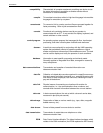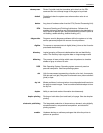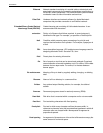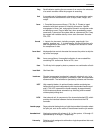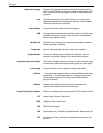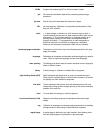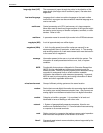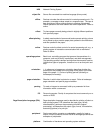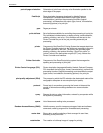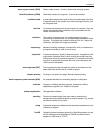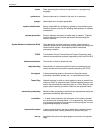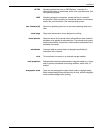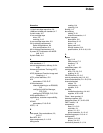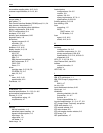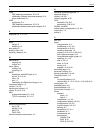
GLOSSARY
GLOSSARY-12 XEROX DOCUPRINT 96/4635/180 IPS INSTALLATION PLANNING GUIDE
portrait page orientation Orientation of print lines or the top of an illustration parallel to the
short edge of the paper.
PostScript Page description language developed by Adobe Systems,
Incorporated. PostScript describes the input (type, format,
characteristics), performs the processing functions (logical
processing), and describes the output (type, format, font selection,
accounting options) of a print job.
ppm Pages per minute.
print attribute Set of attributes available for controlling the processing of a print job.
Print attributes include simplex or duplex printing, media selection,
collating, stitching, and so on. Print attributes can be sent to the
Printer Controller as part of the job, providing automatic job
processing.
printer Component of the DocuPrint Printing System that accepts data from
the Printer Controller and prints the document according to the print
attributes specified by the user. The printer also provides paper
stacking, collating, and optional finishing. “DocuPrint printer” or
“printer” refers to the base printer engine (IOT) only, without the
Printer Controller and interface.
Printer Controller Component of the DocuPrint printing system that manages the
spooling and processing of print jobs.
Printer Control Language (PCL) Printer description language defined by Hewlett–Packard Company.
PCL describes the input (type, format, characteristics), performs the
processing functions (logical processing), and describes the output
(type, format, font selection, accounting options) of a print job.
print quality adjustment (PQA) The process by which the IPS maintains the electrostatic state of the
xerographic subsystem to ensure optimal print quality.
protocol Formal set of conventions governing the format of data and the
control of information exchange between two communication
devices.
query Request for data or other information, entered by an operator while
the system is processing.
queue List of documents waiting to be processed.
Random Access Memory (RAM) Volatile memory used for temporary storage of data and software
commands, used by programs for immediate task processing.
raster data Binary data, usually consisting of dots arranged in scan lines,
according to the print order.
rasterization The creation of a bitmap image of a page for printing.



